Sequestration of latent TGF-β binding protein 1 into CADASIL-related Notch3-ECD deposits
- PMID: 25190493
- PMCID: PMC4243959
- DOI: 10.1186/s40478-014-0096-8
Sequestration of latent TGF-β binding protein 1 into CADASIL-related Notch3-ECD deposits
Abstract
Introduction: Cerebral autosomal dominant arteriopathy with subcortical infarcts and leukoencephalopathy (CADASIL) represents the most common hereditary form of cerebral small vessel disease characterized by early-onset stroke and premature dementia. It is caused by mutations in the transmembrane receptor Notch3, which promote the aggregation and accumulation of the Notch3 extracellular domain (Notch3-ECD) within blood vessel walls. This process is believed to mediate the abnormal recruitment and dysregulation of additional factors including extracellular matrix (ECM) proteins resulting in brain vessel dysfunction. Based on recent evidence indicating a role for the transforming growth factor-β (TGF-β) pathway in sporadic and familial small vessel disease we studied fibronectin, fibrillin-1 and latent TGF-β binding protein 1 (LTBP-1), three ECM constituents involved in the regulation of TGF-β bioavailability, in post-mortem brain tissue from CADASIL patients and control subjects.
Results: Fibronectin and fibrillin-1 were found to be enriched in CADASIL vessels without co-localizing with Notch3-ECD deposits, likely as a result of fibrotic processes secondary to aggregate formation. In contrast, LTBP-1 showed both an accumulation and a striking co-localization with Notch3-ECD deposits suggesting specific recruitment into aggregates. We also detected increased levels of the TGF-β prodomain (also known as latency-associated peptide, LAP) indicating dysregulation of the TGF-β pathway in CADASIL development. In vitro analyses revealed a direct interaction between LTBP-1 and Notch3-ECD and demonstrated a specific co-aggregation of LTBP-1 with mutant Notch3.
Conclusion: We propose LTBP-1 as a novel component of Notch3-ECD deposits and suggest its involvement in pathological processes triggered by Notch3-ECD aggregation.
Figures
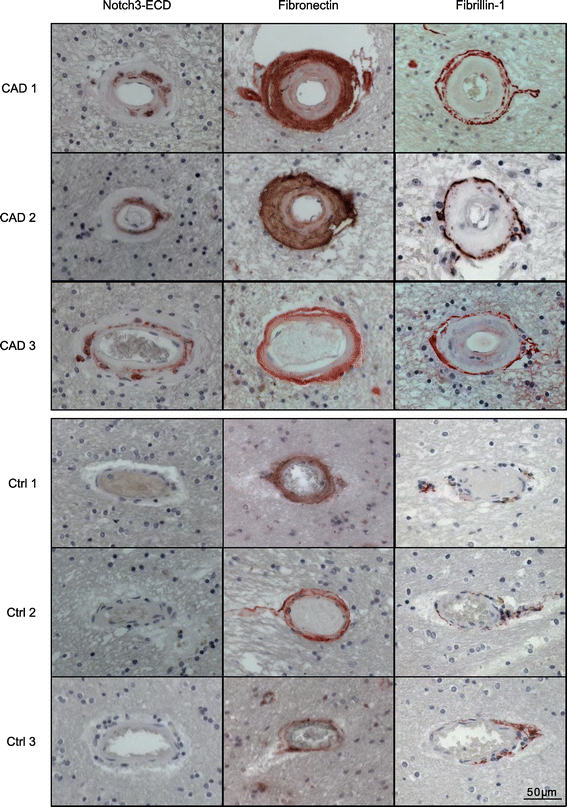
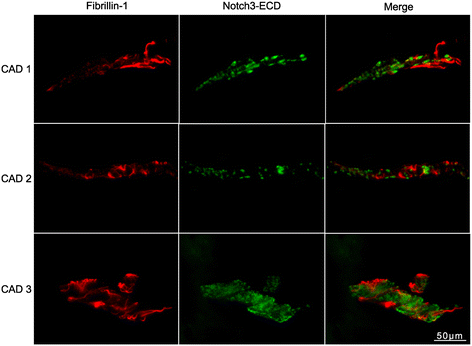
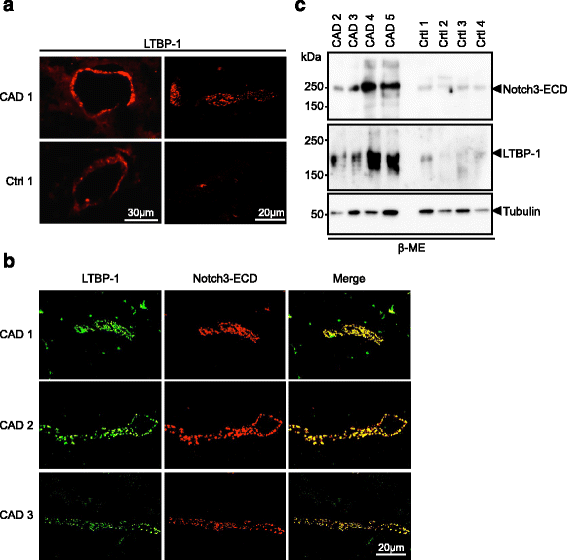
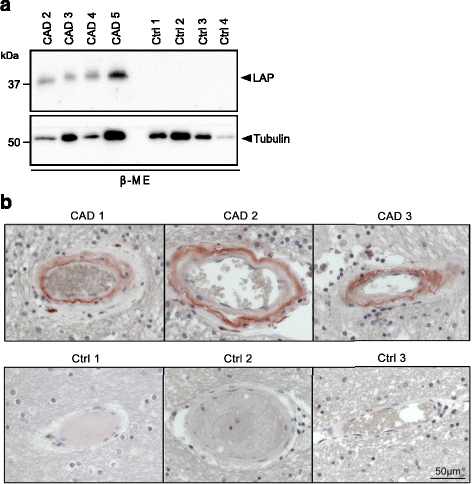

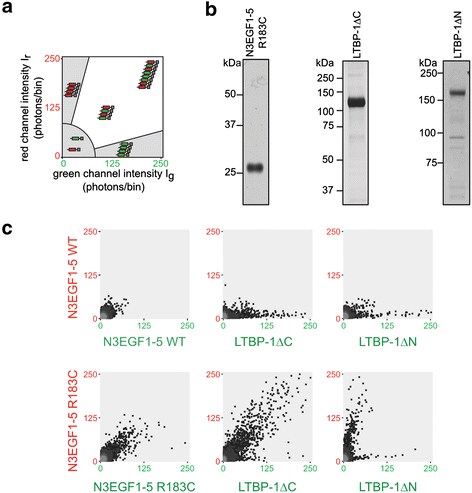
References
-
- Miao Q, Paloneva T, Tuominen S, Poyhonen M, Tuisku S, Viitanen M, Kalimo H. Fibrosis and stenosis of the long penetrating cerebral arteries: the cause of the white matter pathology in cerebral autosomal dominant arteriopathy with subcortical infarcts and leukoencephalopathy. Brain Pathol. 2004;14(4):358–364. doi: 10.1111/j.1750-3639.2004.tb00078.x. - DOI - PMC - PubMed
Publication types
MeSH terms
Substances
LinkOut - more resources
Full Text Sources
Other Literature Sources
Research Materials
Miscellaneous

